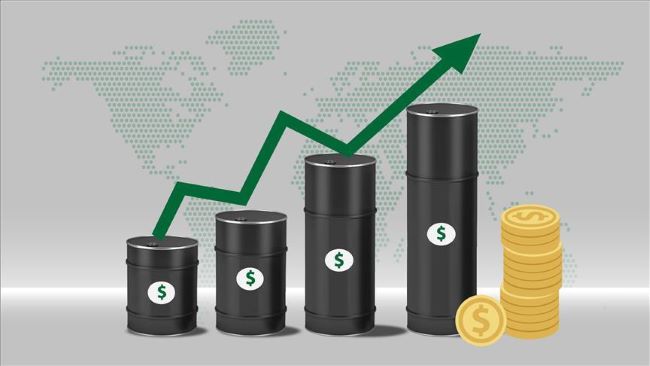Amidst worldwide economic worries, oil prices marginally increased due to the anticipation of robust demand in China and the US as the market assessed leading consumer economic indicators.
During the day, Brent finished 0.69% higher. However, since the beginning of the month, prices have been moving within a rather small range. A barrel of Brent oil was trading for $83.09. At the same moment, the U.S. benchmark West Texas Intermediate (WTI) was trading at $78.58 per barrel, up 0.41% from the previous session’s closing price of $78.26 per barrel.
ING stated in a statement that the lack of direction in prices more lately is not surprising given the uncertainty around what OPEC+ members may do with their extra voluntary supply cutbacks. The oil minister for Iraq made recent remarks that only add to this uncertainty. In addition, Brent has been facing some technical resistance along the 200-day moving average.
The EIA released its latest Drilling Productivity Report yesterday, which showed that drillers increased their drilled but uncompleted well (DUCs) inventory for the second consecutive month in April. The number of DUCs increased by six in April to 4,510. This is the first back-to-back increase in DUC inventory since late 2022. The increase in inventory is driven by lower completion rates, rather than a significant increase in drilling.
Uncertainty over a cease-fire in the Middle East, where the majority of global oil reserves are located, puts upward pressure on oil prices. Last week, Hamas, which is believed to be holding nearly 130 Israelis following its Oct. 7 cross-border attack, accepted a proposal drawn up by Egypt and Qatar for a cease-fire in Gaza.
But Israel said the truce offer did not meet its key demands and decided to push ahead with an operation in Rafah, home to more than 1.5 million displaced people.
US Secretary of State Antony Blinken said Sunday there are no’red lines’ that would prompt Washington to cease backing Israel in its war with Hamas but warned the Israeli army against launching a full-scale ground invasion of the southern Gaza city of Rafah.
He emphasized that Israel has not yet presented a credible plan to protect the city’s nearly 1.5 million Palestinian inhabitants. Biden had announced Wednesday that he would suspend arms supplies to Israel if a major attack is launched on Rafah. Expectations that the Organization of the Petroleum Exporting Countries (OPEC) and its partners, known as OPEC+, could prolong supply curbs into the second half of the year buoyed global oil markets.
Market analysts noted that oil prices started the week on a negative note after comments from US Federal Reserve (Fed) officials dampened hopes of interest rate cuts. Experts agree that keeping interest rates at high levels for a sustained period will slow growth and impair fuel demand in the world’s biggest economy and oil consumer.
The increasing value of the US dollar against other currencies also put downward pressure on prices by making oil expensive for other currency-holding traders. Meanwhile, the EIA forecasts the US shale oil production will grow by 17k b/d month-on-month to 9.85m b/d in June. The Permian is expected to drive almost all of this increase. US shale gas output is expected to fall 330mcf/day to 99.2bcf/day.
The low gas price environment has weighed on drilling activity, which in turn will weigh on natural gas output. European natural gas prices have come under renewed pressure. Front-month TTF futures broke below EUR30/MWh, after settling 1.5% lower yesterday.
Fundamentals remain bearish for the European market given the comfortable storage levels and the expectation that the region will hit full storage ahead of next winter, according to ING. Storage is 64% full at the moment.
The comfortable storage situation is at odds with speculative flows into the market. Speculators have increased their net long to the highest since February 2022. The buildup of a large speculative long in a bearish market increases the risk of an aggressive pullback in prices. OPEC will release its latest monthly market report today. The release will include OPEC production numbers for April and the group’s latest outlook for the oil market.
This will be important in the lead-up to the Joint Ministerial Monitoring Committee meeting in early June. Last month, OPEC forecasted global oil demand to grow by 2.25m b/d in 2024 and 1.85m b/d in 2025.
As a result, this left demand for OPEC supply in 2024 at 28.5m b/d and 29m b/d in 2025. These numbers are well above the 26.6m b/d that OPEC produced in March. However, OPEC does have much more aggressive demand growth forecasts than the IEA and the EIA.













